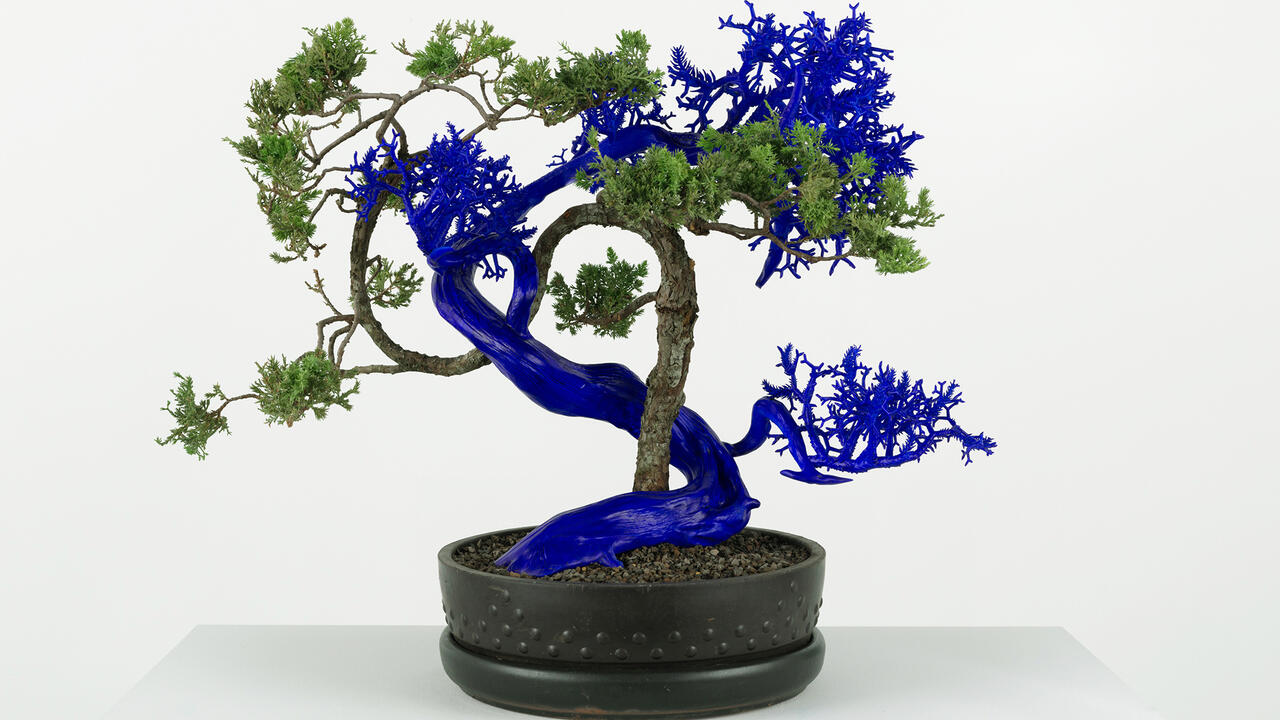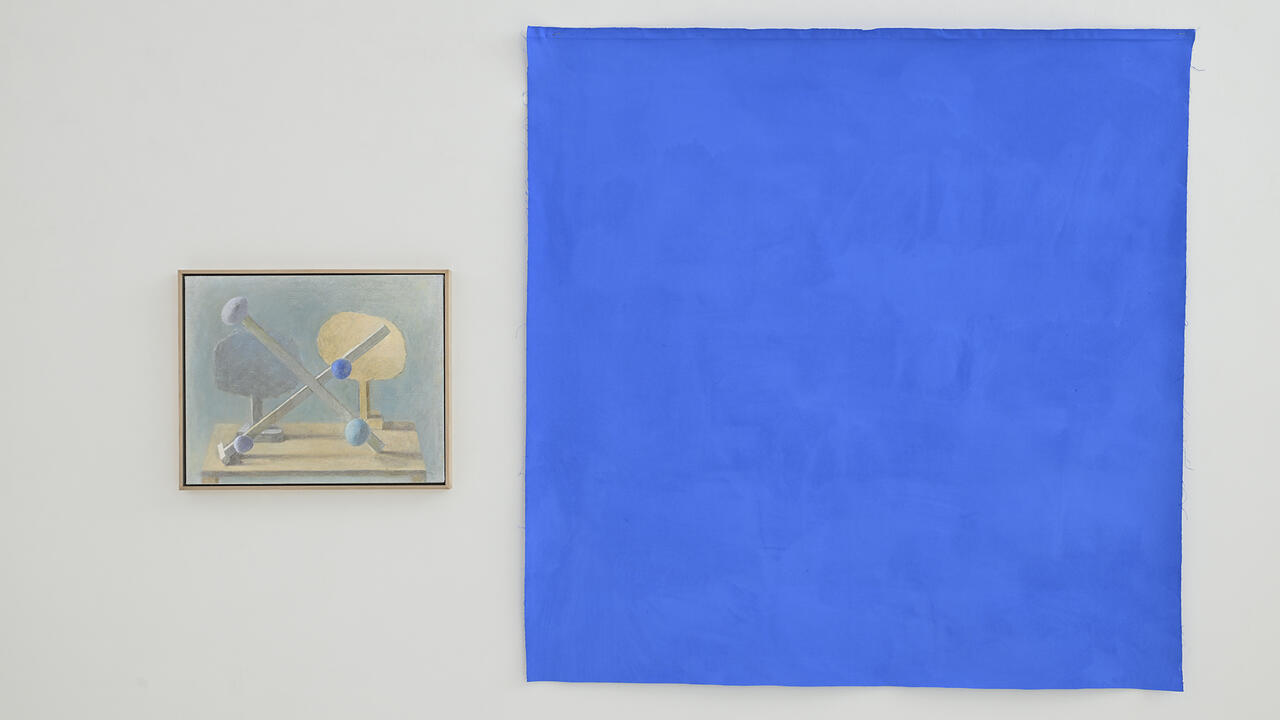Helen Marten and the Thingness of Words
In Sadie Coles’s sprawling Kingly Street gallery, Helen Marten lays out an exquisite corpse of ordinary affects. It’s impossible to see in totality so we rely on the clues
In Sadie Coles’s sprawling Kingly Street gallery, Helen Marten lays out an exquisite corpse of ordinary affects. It’s impossible to see in totality so we rely on the clues

In Sadie Coles’s sprawling Kingly Street gallery, Helen Marten lays out an exquisite corpse of ordinary affects. It’s impossible to see in totality so we rely on the clues: a head is offered upon entry, followed by two perpendicular arms, then a model solar-system stomach – planets coasting on stale biscuits. The outstretched legs turn what’s left of the space into a triangle, its digestive apparatus (punctured drywall as the anus) spilling a temper tantrum of text hidden in a glut of objects. Laid with literal tripwires of black rebar that scaffold together a dozen supersized silk-screen paintings, sculptures and semantic flotsam, the prostrate stick-figure anatomy of ‘Sparrows on the Stone’ offers a loose symmetry that keeps us on our toes.

‘I’ve been thinking about the stick figure proposal for a long time,’ Marten tells me as we traverse its left leg, ducking under a floating, key-shaped floorplan of Decoy Stage (family model) (all works 2021) that sagely locates ‘KFC’ next to ‘bad shoes/slow drugs/wretched pretzels’ – just around the corner from ‘JAIL’ and ‘BLACK HOLE/THE COSMOS’. ‘This was meant to be a really simple show: literally just paintings on walls. But, whenever I try to make deliberately smaller works, it just becomes an aggregation of parts and ideas such that it simply has to expand. When meaning twists into a constellation with something else like a knot, it’s incredibly theoretically satisfying.’

In ‘Sparrows on the Stone’, words become unreliable way-finders, broken compasses for a hallucinogenic landscape of shifting meaning. Spatializing words creates worlds, and Marten scaffolds hers with recognizable references that offer temporary orientation. Recurrent fixations – bells, birds, bricks; clowns, childhood and chessboards – form a half-buried glossary that bristles with the familiarity of repetition but switches codes between glances. Nothing can be taken at face value. Painted plants on a signpost/architectural model spell out morse code, while a trinity of bulging bells that bookend the digested sculpture A Tantrum Carved from Stone carries the split cursive script of ‘temper’ atop a wind-up bird, plastic castle and water cooler, respectively. A fire rescue manikin plays a game of chess with itself next to the painting Two Regimes of Madness (Professor Lichen), which depicts a scene perfectly bisected by a row of white male heads: above, a waterborne madman appears bewitched by a Raft of the Medusa-like hunger fever; below, a tormented psychoanalyst reclines on his thinking couch while two leggy letters ‘SH’ traverse his feverishly vacuumed carpet. The chessboard is propped up with a single sponge; the faceless manikin cradles an empty envelope from the American Sponge & Chamois Co. Who’s gaming who? Are these more than coincidences, or are you looking too hard?
As much as the sculptures and paintings of ‘Sparrows on the Stone’ are hosts for wordplay, they are also things wanting to become other things. The material glut of crushed velvet, aluminum, PVC and faux leather that comprises these wall-hung silk-screen paintings suggest a kind of alchemic transformation: paint becoming brick, shoe soles, checkerboard tablecloths. Past the digestive spillage of A Tantrum Carved from Stone, the stick figure’s disappearing rebars project through the corners of the gallery and suggestively beyond – as if it might rage throughout the city, toppling buildings with its weird logic.

Here, Marten’s fixation on the sublime complexity of ordinary thingness finds a physical home, not of flesh but all the other kinds: spit and seams, poured metal and paint splatters, pistachio shells, bent pool chairs, the obsessive obliteration of dust bunnies. Pathetic machines and language systems hover on the cusp of failure but are buoyed up by a sense of becoming something else, somewhere different. Like an ever-changing weather system, it’s the twists and turns of ‘Sparrow on the Stone’ that animate the form, extending into a space of suspended possibility that feels infinite.
'Helen Marten: Sparrows On the Stone' is on view at Sadie Coles HQ, London, until 30 October
Main image: Helen Marten, Two Regimes of Madness (Professor Lichen) (detail), 2021, mixed media, 122 × 200 cm. Courtesy: the artist and Sadie Coles HQ, London; photograph: Eva Herzog




















